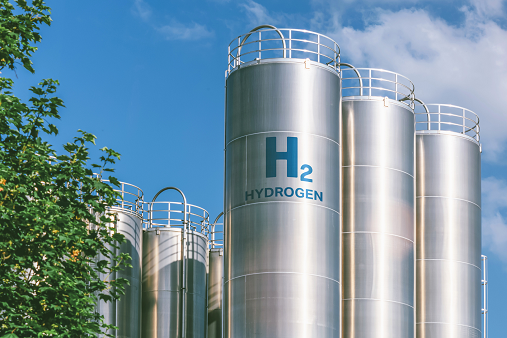The final month of the U.S. Supreme Court’s annual term was stacked with high-profile cases on marriage, healthcare, and the death penalty, to name just a few, that are likely to have a ripple effect on legal issues for years to come. Those following the Court’s review of the U.S Environmental Protection Agency’s (EPA) “Mercury and Air Toxics Standard” (MATS) for power plants may have been expecting an opinion of equal weight. After all, the MATS rule is one of the most significant EPA rules in the last few years, with billions of dollars in investment decisions on the line as well as important public health concerns.
But the Court’s June 29 decision in Michigan v. EPA ultimately rested on the fairly narrow, but nevertheless significant, conclusion that EPA’s failure to consider the costs of compliance when deciding in the first instance whether it was “appropriate and necessary” to regulate hazardous air pollutants (HAPs) from power plants was contrary to law. The “appropriate and necessary” test is a unique statutory requirement for HAP emissions regulations for power plants, so the decision’s applicability to other HAP emissions standards is somewhat limited.
The Court gave no instructions to vacate the MATS rule, however -- it was simply remanded to the D.C. Circuit Court of Appeals, and that court will have to fashion a more specific remedy, which would presumably include a remand to the EPA to address the error identified by the Supreme Court. Given that many utilities have already made investments to comply with the MATS rule, and others are currently subject to compliance plans with 2016 deadlines, the regulated community will be watching closely how the D.C. Circuit addresses the Supreme Court’s remand and the timing of any new potential rulemaking. In the meantime, the EPA maintains that power plants must continue to comply with the MATS rule because the Court did not vacate it.
Although the decision was narrow, the three opinions in the case include substantial discussion of the appropriate role of agency deference in judicial decision-making. Other marquee EPA rules, like the recent “Waters of the U.S.” rulemaking and the Clean Power Plan regulating greenhouse gas emissions, may eventually find their way to the Supreme Court, and any hint or intimation about how the Court might view those EPA rules is, of course, being heavily scrutinized. Although it can be a bit like reading tea leaves to try to predict how the Court would view those rules, Michigan v. EPA and other recent decisions could signal a shift in how the Court evaluates the weight of agency decisions under the Chevron standard of review, a judicial principle that requires courts to defer to an agency’s reasonable interpretation of an ambiguous statute it is charged with administering.
Background on the MATS Rule
In the 1990 Clean Air Act (CAA) amendments, Congress established, among other things, the acid rain program, which directed the EPA to promulgate rules targeting power plant emissions of conventional pollutants, like sulfur dioxide (SO2) and nitrogen oxide (NOx). Congress also established certain limitations on emissions of HAPs from various sources, but for power plants Congress ordered the EPA to study how other CAA programs, like the acid rain program, affected power plant HAP emissions. If after the EPA’s “study of the hazards to public health reasonably anticipated to occur” from power plant HAP emissions the agency found that “regulation [was] appropriate and necessary,” then the statute says the EPA “shall” regulate power plants. 42 U.S.C. § 7412(n)(1)(A) (emphasis added). In a 2012 rulemaking, the agency determined that regulating power plants was “appropriate” due to human health risks from mercury and that emission controls were available. The EPA also found additional regulation was “necessary” because existing CAA regulations did not eliminate these risks. 77 Fed. Reg. 9363 (Feb. 6, 2012). While the EPA issued a Regulatory Impact Analysis with the Final Rule, it did not consider costs of compliance (e.g., pollution controls) when deciding whether to regulate power plants under 42 U.S.C. § 7412 in the first place. 77 Fed. Reg. 9306, 9326.
The Court’s Decision in Michigan v. EPA
The majority opinion, authored by Justice Antonin Scalia, centered on the EPA’s determination that the “appropriate and necessary” language of the statute did not “compel a consideration of cost” when deciding whether to regulate HAP emissions from power plants. 77 Fed. Reg. 9327. The majority concluded that “EPA strayed far beyond” the bounds of reasonable interpretation of the CAA when it ignored costs, even under the deferential Chevron standard of review. Michigan v. EPA, No. 14?46, slip op. at 6 (2015). Reading “appropriate” as an “all-encompassing term” that includes all factors, including cost, the Supreme Court majority stated that, in light of “established administrative practice,” the agency’s willingness to “impose billions of dollars in economic costs in return for a few dollars in health or environmental benefits” was entirely inappropriate, if not irrational. Id. at 6?7.
Noting that the statute also required the EPA to consider the cost of technologies to reduce HAP emissions, the Court stated that “Chevron allows agencies to choose among competing reasonable interpretations of a statute; it does not license interpretive gerrymanders under which an agency keeps parts of statutory context it likes while throwing away parts it does not.” Id. at 9. Interestingly, the majority hinted that the EPA “could have considered ancillary benefits” (such as cutting PM and SO2 emissions) to make the benefits outweigh the costs of regulation, but since the agency did not do so, the Court could not rule on the matter. Id. at 14.
Justice Elena Kagan, writing for the dissent, argued that the majority’s invalidation of the rule merely because the EPA did not take cost into account “at the very first stage of the regulatory process” when the agency “later took costs into account again and again” was “a peculiarly blinkered way for a court to assess the lawfulness of an agency’s rulemaking.” Id. at 2 (Kagan, J., dissenting). Essentially, the dissenting Justices believe that the words “appropriate and necessary” should be analyzed in the context of the entire regulatory process, so it was perfectly acceptable that the EPA only began to consider costs after making the initial decision to regulate HAP emissions from power plants. Id. at 9.
Justice Clarence Thomas’ lone concurrence focused exclusively on attacking Chevron deference, which he consistently argues is unconstitutional and violates the separation-of-powers between the branches of government. Id. at 2 (Thomas, J., concurring); see also Perez v. Mortgage Bankers Assn., 575 U. S. ___, ___ (2015) (concurring opinion) (slip op. at 8).
What Does Michigan v. EPA Mean for Future Appeals of Agency Rules?
Despite Justice Thomas’ scathing critique of Chevron doctrine, there does not appear to be enough votes on the Court to overturn Chevron deference anytime soon. However, there do appear to be some differences of opinion in how and when Chevron should be applied that will play out in future cases. Courts typically give “considerable weight” to an agency’s “construction of a statutory scheme it is entrusted to administer.” Chevron U.S.A., Inc. v. Natural Resources Defense Council, Inc., 467 U.S. 837, 844 (1984). So, it is noteworthy that the EPA has recently lost under Chevron review both for its MATS rule and for its attempt to “tailor” regulation of greenhouse gas emissions through the PSD and Title V CAA programs in Utility Air Regulatory Group v. EPA. 134 S. Ct. 2427, 2446 (2014). Further, and perhaps more importantly, Chief Justice John Roberts’ decision in the recent Affordable Care Act case, King v. Burwell, side-stepped and refused to apply Chevron deference, while nevertheless upholding the government’s interpretation of the healthcare law. No. 14–114, slip op. at 8 (2015). This may reflect some unease on the part of certain members of the Court in how it has granted agency deference in this past. Stay tuned…
For more information, contact the Barnes & Thornburg attorney with whom you regularly work, or one of the following attorneys in the firm’s Environmental Law Department: Tony Sullivan at tony.sullivan@btlaw.com or 317-231-7472; Charles Denton at charles.denton@btlaw.com or 616-742-3974; Michael Elam at michael.elam@btlaw.com or 312-214-5630; or Joel Bowers at joel.bowers@btlaw.com or 574-237-1287.
© 2015 Barnes & Thornburg LLP. All Rights Reserved. This page, and all information on it, is proprietary and the property of Barnes & Thornburg LLP. It may not be reproduced, in any form, without the express written consent of Barnes & Thornburg LLP.
This Barnes & Thornburg LLP publication should not be construed as legal advice or legal opinion on any specific facts or circumstances. The contents are intended for general informational purposes only, and you are urged to consult your own lawyer on any specific legal questions you may have concerning your situation.
Visit us online at www.btlaw.com and follow us on Twitter @BTLawNews.
















